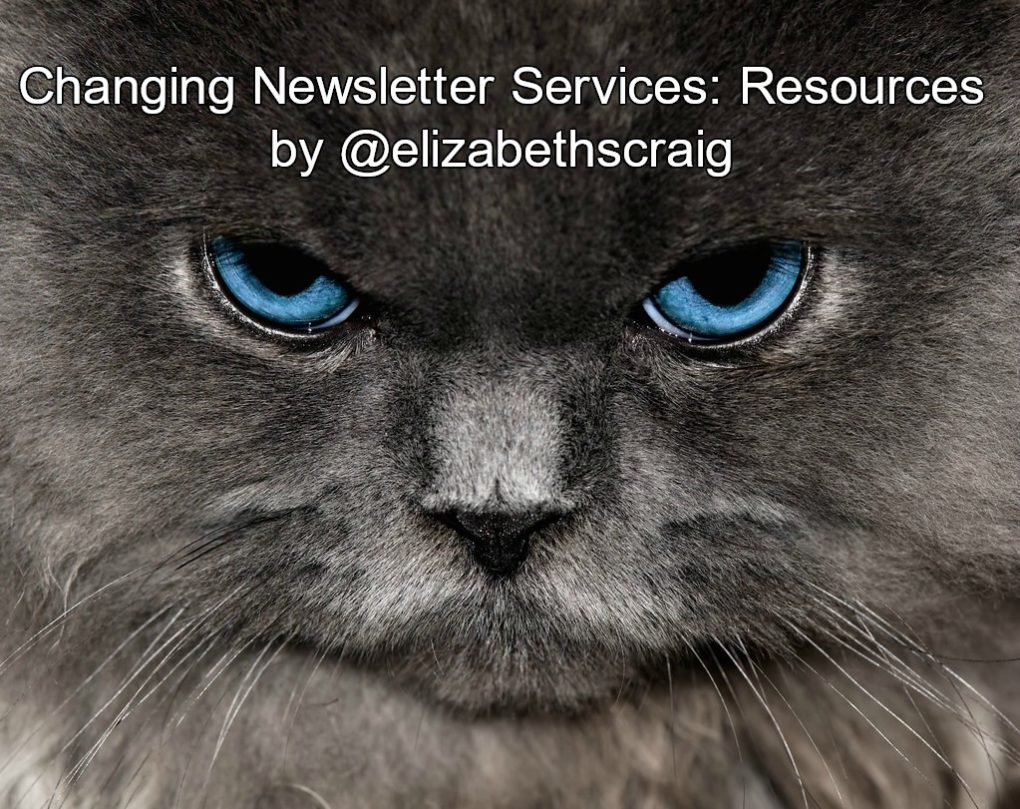by Elizabeth S. Craig, @elizabethscraig
I’ve used MailChimp for years, but I’m one of the many writers who is now abandoning ship as the platform experiments with new pricing and a different direction (toward customer relationship management). For many writers, the costs won’t make sense for basic email newsletter marketing.
I have dreaded making a change since I realized I’d need to. I changed banks in March and it was a heinous task, taking two 8-hour days to dump a bank I’d used for the last 20 years. It did end up being worth it, though, as I’m sure this change will be.
One reason it’s a pain is the fact that MailChimp is everywhere in regard to my stuff…on Facebook, integrated through WordPress on my site, as an email signup link for over 30 books, on my Amazon author page…the list goes on and on. I’m not sure why I didn’t set up a landing page on my own site and then use the service’s form on it…but apparently, that’s exactly what I did. I even had a splash page, but didn’t use it to host my newsletter signup. I certainly won’t be taking that approach again, obviously.
If you paid for a MailChimp pay-as-you-go plan, as I did, you may have to delay leaving (not sure how or if they refund that money, so I just decided to send out one last email). All of my final changes are taking place after my last MailChimp newsletter. So far, I’ve set up a new account with the new service and have transferred my subscribers (the audience is still also at MailChimp for that last newsletter).
So far, the change has been easy because it’s been automated.Continue reading





